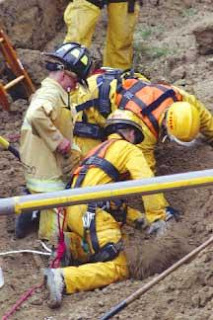
Cave-ins and other similar excavation hazards account for a major number of accidents reported in the construction industry. The construction industry on its own does not lack any number of chores that are highly hazardous. So, working in the construction can be especially dangerous. Each and every job related to the construction industry has a whole list of hazards and potential hazards that one must avoid. This is the case with excavations as well.
Workers who work in trenches and other excavation sites may face a number of potentially fatal hazards like cave-ins. However, OSHA says that pre-planning can really help prevent any accidents that may occur while trenching. Here are a few ways to stay safe while working on an excavation project:
1.Start by evaluating the soil conditions and then selecting the necessary, appropriate protective systems.
2.Make sure the protective systems are constructed in accordance with the OSHA standards.
3.Check with the electric and gas utilities to see if there are any underground lines in that area.
4.Check if there is presence of any hazardous fumes, low oxygen levels, or toxic gases, especially if there is any gasoline-fueled equipment running or if the soil has been contaminated by storage tanks and leaking lines. Make sure the respiratory protection and ventilation is up to the mark.
5.Make sure you provide safe access for entry and exit into the excavated site.
6.If water accumulation is a common occurrence, then provide the appropriate protections.
7.Inspect a site at the start of the shift, after a rainstorm or after any kind of hazardous event.
Workers who work in trenches and other excavation sites may face a number of potentially fatal hazards like cave-ins. However, OSHA says that pre-planning can really help prevent any accidents that may occur while trenching. Here are a few ways to stay safe while working on an excavation project:
1.Start by evaluating the soil conditions and then selecting the necessary, appropriate protective systems.
2.Make sure the protective systems are constructed in accordance with the OSHA standards.
3.Check with the electric and gas utilities to see if there are any underground lines in that area.
4.Check if there is presence of any hazardous fumes, low oxygen levels, or toxic gases, especially if there is any gasoline-fueled equipment running or if the soil has been contaminated by storage tanks and leaking lines. Make sure the respiratory protection and ventilation is up to the mark.
5.Make sure you provide safe access for entry and exit into the excavated site.
6.If water accumulation is a common occurrence, then provide the appropriate protections.
7.Inspect a site at the start of the shift, after a rainstorm or after any kind of hazardous event.
Comments
Post a Comment